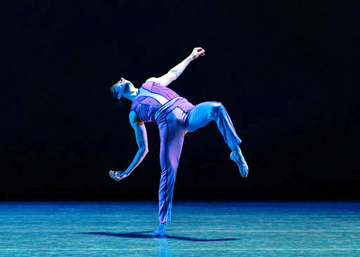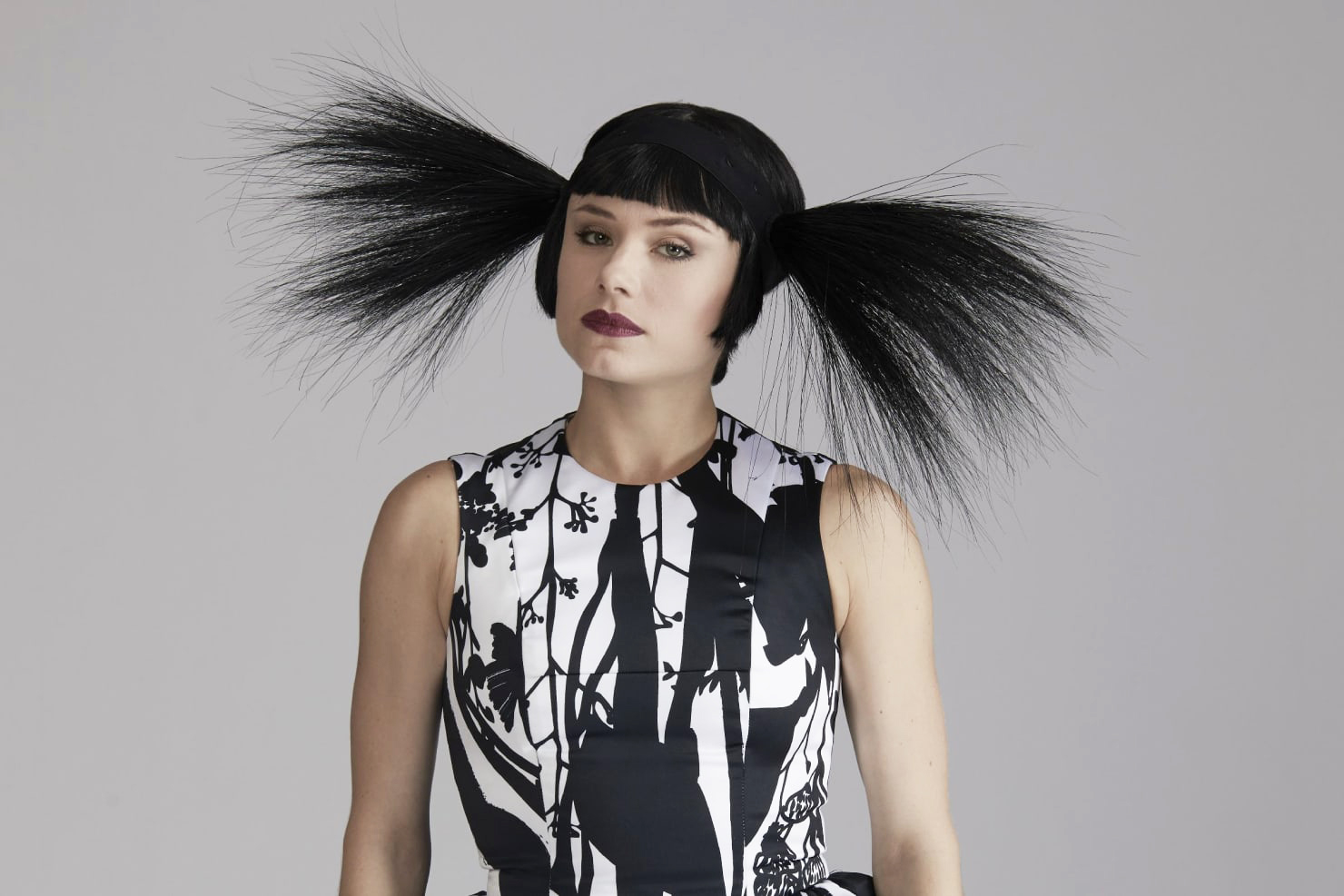Dance: “Visionary Voices” at the New York City Ballet
By Dawn Lille
arttimesjournal March 12, 2022
 Jonathan Fahoury in “Emanon" Jonathan Fahoury in “Emanon"Photo: Erin Baiano |
The New York dance world, especially its balletomanes, was thrilled when the New York City Ballet (NYCB) opened its fall season after 18 months of nothing on stage. This melded into the annual Nutcracker, but Covid interfered, with some performances of this yearly adventure cancelled. Then repertory programs in January suffered the same fate. Hence, when I was able to view “Visionary Voices” on February 3 rd, I was delighted.
The program opened with Emanon – In Two Movements, a world premiere by Jamar Roberts, the resident choreographer of Alvin Ailey American Dance Theater. The work, Robert’s first on stage for NYCB, takes its title from two sections of the album Emanon by the jazz composer Wayne Shorter.
It started with a dancer dashing on stage and performing a solo, with her long arms thrusting diagonally across her upper body, that seemed to be trying to separate itself from her lower body. In the latter the legs performed high kicks, sometimes passing through the ballet attitude position, in which the working leg creates a right angle. Then the whole body processed quick turns and a changing front.
Before one could fully decipher this, a second body rushed into the space for a duet of two equal partners, shaking loose even more body parts. This was without the elements of classical partnering, but this man and woman were talking to and reacting to each other. There was another solo, a trio, four women, four men and then four couples. The excitement built with the music; sometimes both calmed down a bit. This was ballet (the women were on point) that was not ballet, with dancers exploring the space, and experiencing it from different places in their bodies.
This is an unfamiliar dance genre for Roberts creatively. He seemed to be leading his wonderful dancers into an unfamiliar way of moving. If, at times, they appeared a bit wary, they’ll get there.
Pam Tanowitz created Bartok Ballet, her first for the company, in 2019, so this is a revival. The score, Bela Bartok’s String Quartet No. 5, with one section cut, was played live by the Flux Quartet.
Tanowitz always displays a solid and intelligent relationship to the music. In this work I kept seeing the dancers as notes relating to each other or floating about on their own – which may be a singular reaction. With rounded backs on bodies balanced on point shoes, with which the women often stamped vehemently on the stage floor, one could interpret this as a takeoff on ballet. The quirky moves and unusual percussive steps led to what might be termed a deconstruction of ballet. The humorous bows were certainly tongue in cheek. Regardless, it was inventive and fun.
 The Runaway Dancer Sara-Mearns Abraham Deacon Photo: Photo: Erin Baian |
Kyle Abraham, the lauded modern dance choreographer, created The Runaway, his first for a ballet company, in 2018, pre-Covid and pre -Black Lives Matter, making this a revival also. Abraham is from Pittsburgh and many of his works deal with racism in that city and elsewhere in an approach of frank social criticism.
Whether this piece fits into that category is debatable. With its wide-ranging music score by Nico Muhly, Kanye West, Jay-Z and James Blake, edited by Abraham, and its black and white large abstract print costumes, with outrageous ruffles, there is nothing classical here. There is also a stiff black neck ruffle reminiscent of Elizabethan attire. The wigs on some of the women are stiff black exaggerations of the child-like hairdo of two bunches, but these stick straight out from the sides of the head.
The sometimes wild, idiosyncratic movement, credited to “collaboration with NYCB,” makes use of the entire body. Is Abraham’s nervy brashness in choice of music and costumes just a way of having fun with his first ballet commission?
Is he running away from classical ballet or is this a reference to slavery? Or both?
Classical ballet started to change in the 20th century and has continued to do so in the 21st in regard to body types, defined sexual and gender roles and a mixture of ballet and modern dance. Additionally, all the social and economic events of the past few years have resulted in greater diversity in subject matter, performers and choreographers.
Ballet dancers, accustomed to at least one traditional technique class a day, found themselves alone and isolated from their community. They had to keep fit in their kitchens and living rooms by themselves. Zoom was not an adequate substitute. Modern dance works have appeared in the repertory for many years, but they were “special.” During the pandemic lockdown NYCB presented virtual programs filmed outdoors with some choreography by modern creators, of whom Roberts was one. While on their own ballet dancers tried to maintain their bodies as best they could and experienced unfamiliar ways of moving. Performers in all dance genres now take ballet to strengthen their technique.
This leads to the question of the future of classical ballet in America. Will it remain as a form of training and change permanently as a form of choreography? Is the future vision of NYCB already here, courtesy of these three modern dance choreographers, two of whom are Black and one a woman? It was an evening where the dancing and its forms made one think.
dawnlille@aol.com
Have a Comment? write to info@arttimesjournal.com
